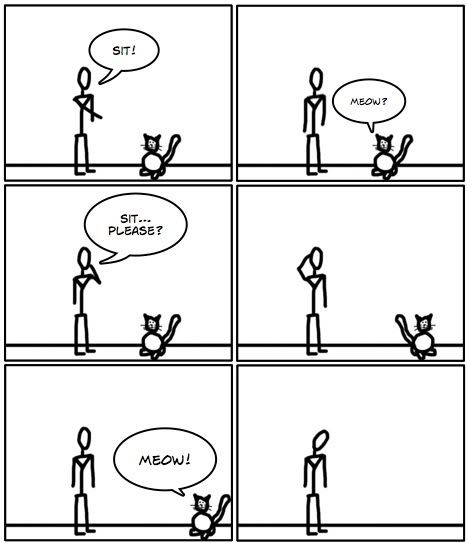Running is the original mode of fast human transportation, we have been doing it for many thousands of years. Our ancestors ran for food and for pleasure, it is built into the very cells of our bodies as part of a 'fight or flight' reaction. When things were dangerous, those who came before us fought. When it was too dangerous, they ran. The only reason that you are able to read this today is because all of your predecessors were better runners than those who weren't so lucky.
As far as I know, most of us are not in any danger of being chased away by lions, tigers and bears (oh my!), so lets drop that side of the coin and talk about running for pleasure. As far as we know, the earliest competitive races were run in Ireland in the Tailteann Games in a 1829 BC, a good thousand years before the first recorded Olympics. Running back then was surely different from what running is now. For starters, nobody had iPods, Nikes, heart-beat monitors or TV screens in front of a moving conveyer belt, they had the cold (it was Ireland, after all) wind in their hair, the ground beneath their feet and the world of the track before them. Nobody cared about reaching the 60%-80% fat burn zone and nobody checked their scales when they got home. Why? Because running is fun.

In our current superficial day and age everybody wants payment for their efforts. If you do something, you get something, it is not a courtesy but an expectation. In the corporate marketplace, that is a fair philosophy, but when it comes to fitness, well being, health and happiness, that is not the way the world works. If you are running to fit into some smaller jeans, to develop a ripped six pack or for any number of other self serving reasons, chances are you're going to hate what you're doing and give up quickly. However, if you love running for the pure sake of being outside, moving over the earth the way you were designed to do, feeling in touch with your movement and surroundings, you will reap rewards you never even knew you needed.
HOW?
Have you ever seen anyone pick up a golf club for the first time and nail a hole-in-one? How about a bullseye on their very first dart? Chances are you have not and will not. Golf and darts are technical skills that rely on flawless technique- you need years of training from professionals who have learned themselves over many years just what to say and do for you to improve. Same with any sport, swimming, basketball, tennis. Poor technique leads to poor performance and injury.
And it's the same with running.
Just because the ability to run is naturally hardwired into our system doesn't mean we know how to utilise that ability. Yet, how many people run without ever hearing a single word about 'proper form'? People get up and they run. They don't go very far and pretty soon they start to hurt. This isn't because running is evil and a waste of time, it is because they are not doing it the way it should be done. If you tried to play golf holding the club upside down, chances are you wouldn't enjoy that much either.
So here's the lesson that you should take from this post and apply to your lives:
In order to run free and be free to run, these are the cues you should repeat in your head every time you hit the track- these are taken from Christopher McDougalls excellent book
Born To Run, for the simple reason that it is brilliant, straightforward and easy to apply.
1.
Easy: Make your steps nice and easy, don't force it. Don't take long strides, just nice, short, easy strides at a pace that is comfortable for you.
2.
Light: Once you've mastered easy, focus on making yourself weightless. Picture your feet barely sweeping the ground as you float along the track.
3.
Smooth: When you're easy and light, make it flow like a smooth rolling river. Think of yourself as a tide rolling down the track.
4.
Fast: If you master easy, light and smooth you'll already be fast.
The biggest mistake people make when they run is pushing themselves too much too soon. You don't jump straight into a hot bath and running is the same, you must ease into it. Start slow, build up from there, push yourself if you feel like a challenge, ease off if you don't. Do it for the right reasons and let yourself enjoy it.
And don't forget to smile, after all, running is fun.




